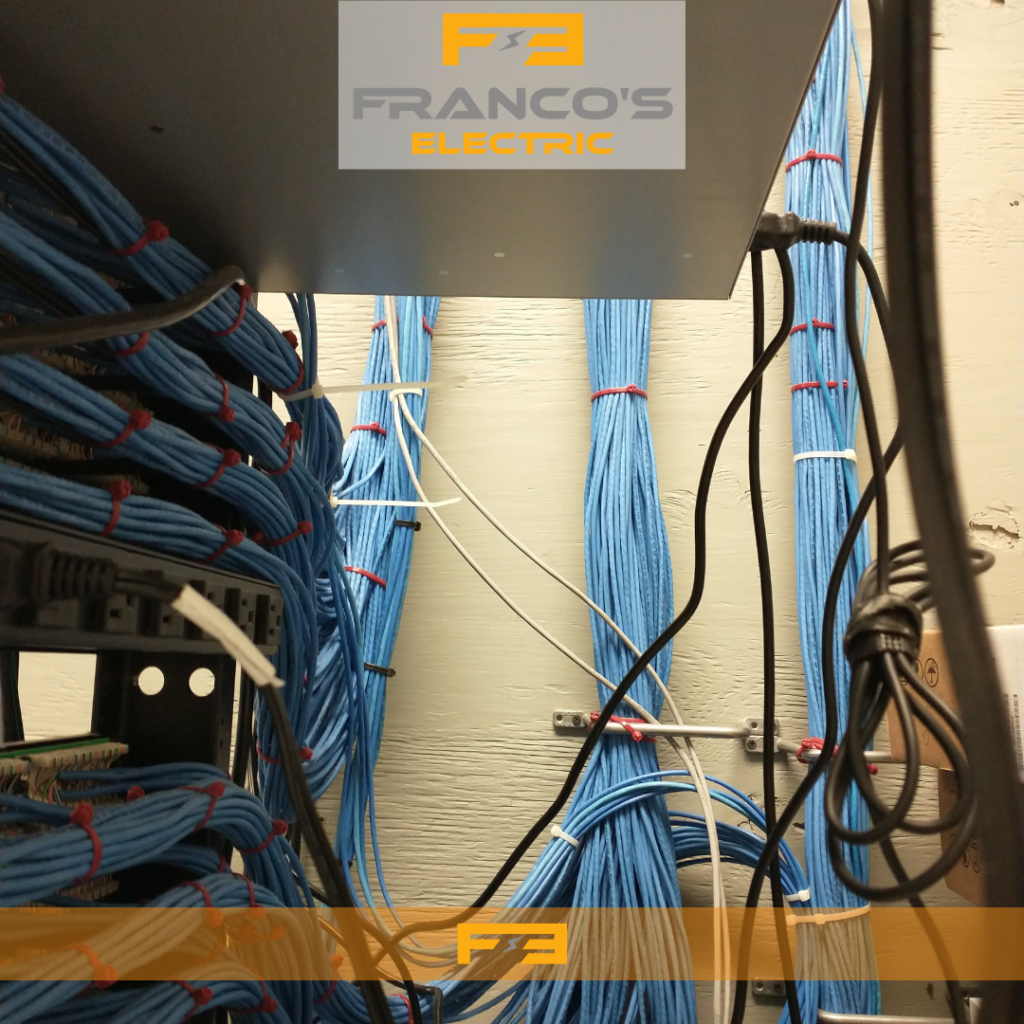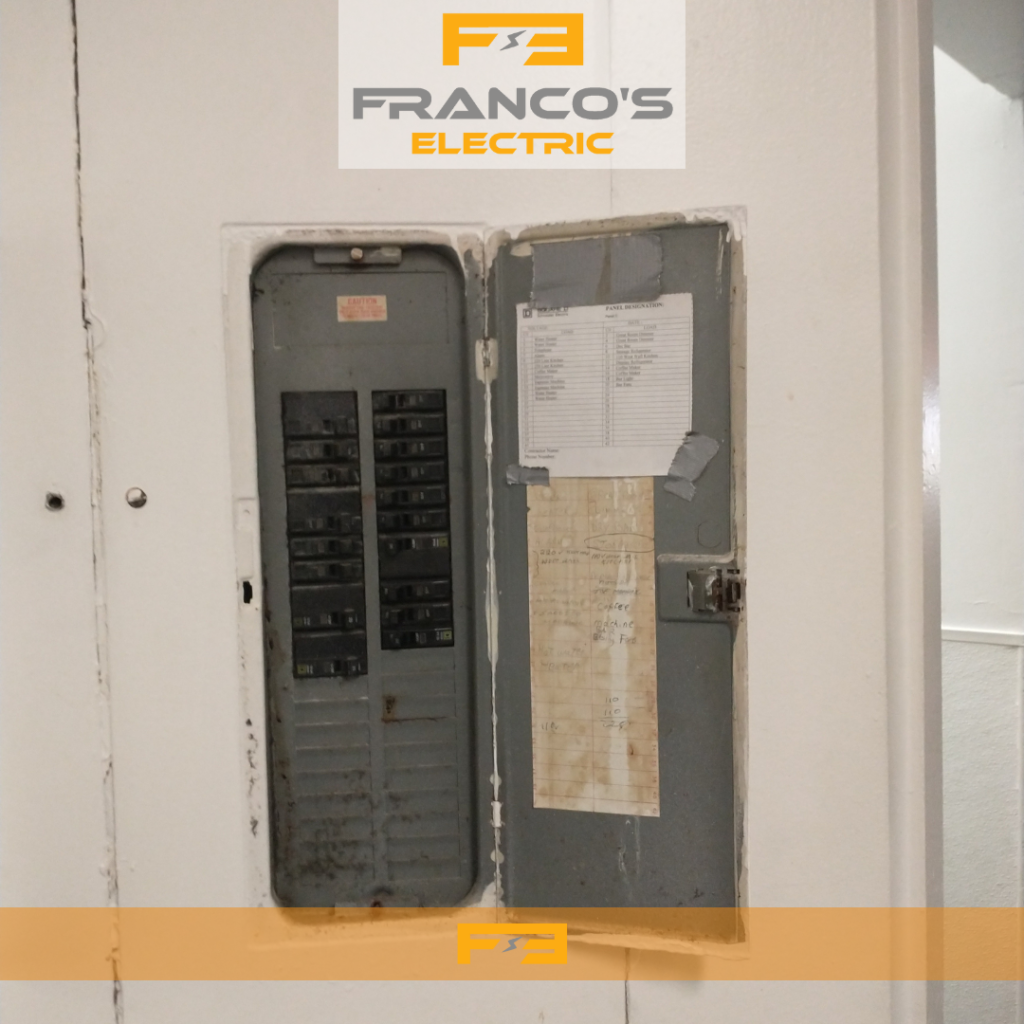The purpose of a circuit breaker panel is to connect wires from the utility company with those
comprising your home’s internal electrical system.
As electricity flows to your house, it passes through the meter, the supply system, and your
circuit breaker panel wiring. At the place where the electric lines enter the panel, one primary
circuit (connected to the power grid) splits into subsidiary circuits.
Circuit breakers are switches that automatically shut off an overloaded circuit to prevent fires,
electrocutions, and other serious dangers caused by improperly contained or maintained
electricity.
Do you always seem to be flipping breaker switches (or replacing) fuses because of circuit
overloads? Are your outlets warm to the touch, or do they show burn marks? Do the lights in
your home sometimes flicker or flash off and on?
If so, it might be that your electrical system is carrying too high a load for the increased usage
common to most households today.
It may be time to upgrade your panel. And if you still have a fuse box, you should give serious
thought to replace it with a circuit breaker panel.
The owners of single-family homes are responsible for all issues related to the electric service
panel. However, most of them will need help determining when a service upgrade and replacing
the circuit breaker panel are in order.
The age of the breakers is also important to know. The life expectancy of breakers is 25-30
years, which is also the same for your panel. It is important to know how old your panel is.
The vast majority of homeowners should never even think about replacing a circuit breaker
panel as a DIY project. A panel replacement exposes the person doing it to potentially deadly
voltage levels.
You should know that this job calls for at least one professional electrician. The cost to replace a
circuit breaker panel runs from roughly $800 to over $3,000, depending on the various factors
that come into play. Electricians can run into unforeseen problems or obstacles.
Once you have selected an electrician you are comfortable working with, they and you will both
have to do some preparation before the work can begin.
The best location for a new circuit breaker panel is determined by factors such as:
● Close to kitchens and other heavy load areas
● Preferably not in bathrooms (a practice often barred by municipal codes)
● In a reachable area of a spacious room
● No obstacles preventing easy access
● A well-illuminated area
Service panels are often located in garages or basements or under stairways. However, note
that there is no problem having a panel in an open space in the main living area. Keeping it out
of sight is a matter of preference.
We highly recommend consulting with an electrician before making a final decision about
where to place the electrical panel. There are mitigating technical factors that should be taken
into account.
The electrician can request an electrical permit from the relevant municipality. They need to
schedule an inspection by the appropriate government agency, utility company, or other
organization.
The power to your home will be shut off by your utility company early in the morning, so be
sure to prepare for a half to a full day without electrical power. For example, if you work at
home using a computer, find an alternative like a nearby cafe.
Once the work is over, the designated inspector may have to check the installation work to
ensure it is up to code. If everything looks good, the utility company will turn your power back
on.
No one selects an electrical panel for their home based on personal taste or the panel’s visual
appeal. You choose a circuit breaker panel based on the amount and intensity of electrical
power your household consumes.
The size of your circuit breaker panel tells you how many electrical appliances or fixtures can
run simultaneously. If you live in an all-electric home, you will need a larger panel.
If the structure uses a combination of electricity and gas, a smaller one should do. Don’t forget,
either, that the appliances you use can make a difference in your panel’s usage.
Residential main breaker panels are available in four sizes, 100 amps, 200 amps, 225 amps, and
400 amps. Follow these steps to determine what size breaker box you need and round up your
total amperage number to the nearest panel size.
Unless you foresee adding more energy-consuming household appliances or fixtures, this is how
to know the right size for the panel. Note that if your circuit breaker is rated at 20 amps, it
should only use 16 amps.
Amperage and voltage both refer to the strength of an electrical current. Where voltage is a
the measure of the pressure that allows electrons to flow, amperage is the electrons’ volume.
You should know the amperage capacity for your home when choosing either a new circuit
breaker panel or a circuit breaker panel replacement. If your home uses 150 amps of electricity,
for instance, the breaker panel should be able to handle 150 or more amps.
However, circuit breakers that provide only 100 to 150 amps are more common in today’s
homes. That’s why many homeowners have converted to 200-amp service. Not to mention,
doing so increases home value.
Replacing the circuit breaker panel should bring some positive changes to your home and the
life you enjoy there. You can expect not to see any more unexpected flickering lights or feel
nervous when unplugging something from an electrical outlet.



